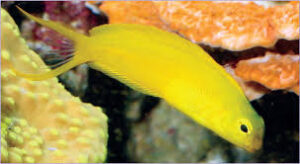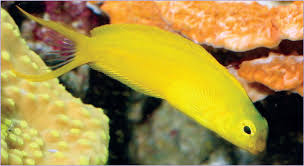
In Chinese culture, the dragon is one of the most potent and revered symbols. From its early origins in ancient mythology to its prominent role in classical Chinese literature and poetry, the dragon has stood as a symbol of power, wisdom, divine authority, and the interconnectedness of nature and the cosmos. The dragon in classical Chinese poetry and literature transcends its physical form, becoming a literary device that evokes a deep spiritual connection, as well as philosophical and moral lessons. This article will explore the multifaceted role of the dragon in classical Chinese poetry and literature, examining how it symbolizes various elements of Chinese thought, culture, and spirituality.
1. The Dragon as a Symbol of Imperial Power
One of the most important roles of the dragon in classical Chinese literature is its connection to imperial power. The emperor, regarded as the “Son of Heaven,” was often associated with the dragon, symbolizing his divine mandate to rule. In poems and stories, dragons frequently appear as manifestations of imperial authority, evoking the emperor’s right to govern.
The Dragon in Imperial Poetry
In the poetry of the Tang (618-907) and Song (960-1279) dynasties, the dragon appears as a central motif representing not only the emperor’s power but also the prosperity of the nation. Poets often wrote about the dragon in reverential tones, describing it as a majestic and awe-inspiring creature capable of controlling the elements and maintaining the harmony of heaven and earth. For example, in the famous poem “The Song of the Dragon” by the Tang dynasty poet Li Bai, the dragon is portrayed as a celestial being that brings peace and stability to the world:
“Rising from the waters, the dragon ascends,
Majestic in its form, with wisdom untold.
Its scales glitter like the stars in the sky,
And its breath sweeps across the vast expanse of earth.”
This image of the dragon as a ruler over both the heavens and the earth reflects the emperor’s sacred position as a mediator between the divine and the mortal realms. The dragon in this context serves as a metaphor for the emperor’s transcendent role and the divine protection that ensures his reign.
Dragons in Epic Tales of the Emperor’s Reign
In classical Chinese literature, dragons are frequently invoked in historical novels and epic tales that celebrate the might and virtue of the emperors. These stories often feature dragons as guardians of the realm or symbols of the emperor’s connection to divine forces.
One example is the “Records of the Grand Historian” (Shiji) written by the Han dynasty historian Sima Qian. In his recounting of China’s dynastic history, Sima Qian describes the founding emperors of the early Han dynasty as being chosen by heaven, with their leadership symbolized by the appearance of dragons. These mythical creatures are often depicted as guides, assisting the emperor in fulfilling his mandate.
2. The Dragon as a Symbol of Luck and Prosperity
In classical Chinese poetry, dragons are not only associated with power but also with good fortune and prosperity. The Chinese believe that dragons bring blessings, protection, and abundance, and this belief is reflected in the way the dragon is portrayed in poetry.
The Dragon as a Bring of Rain and Harvest
Dragons in Chinese poetry are often linked with the elements of nature, especially water. In ancient times, people believed that the dragon had control over water, particularly rain, and that its power could ensure a successful harvest. This belief is reflected in classical poems that celebrate the dragon’s ability to summon rain and bring prosperity to the land.
For example, in a poem from the Song dynasty, the poet Su Shi writes about the dragon’s role in controlling the natural elements:
“The dragon stirs in the deep of the sea,
The winds rise, the rain falls in torrents,
The earth becomes fertile, the crops bloom,
All under the sway of the dragon’s power.”
In this poem, the dragon is shown as a benevolent force, ensuring the well-being of the land and its people. The dragon’s connection to rain and agricultural prosperity ties it to the cycle of life, growth, and sustenance in Chinese culture.
The Dragon and Prosperity in the Taoist Tradition
The dragon also plays a significant role in Taoist literature, where it is often seen as a symbol of the flow of energy (qi) and the harmony between the forces of nature. In Taoism, the dragon is considered a spiritual creature that embodies vitality, transformation, and the balance of opposites, such as yin and yang. As a result, the dragon represents the path to spiritual enlightenment and prosperity, both in the material and the spiritual realms.
In one Taoist poem by Zhuangzi, the dragon is described as a figure that transcends the physical world:
“Like a dragon in the depths of the river,
It rises above the clouds, unseen by others,
Moving through the world without effort,
It is both present and absent,
Guided by the flow of the Dao.”
This portrayal of the dragon reflects its spiritual significance in Taoism, where it serves as a metaphor for the harmonious balance of the universe and the fluidity of existence. In this context, the dragon represents the ability to move through life with grace, adaptability, and wisdom.
3. The Dragon as a Mythical Being in Classical Stories
Beyond its symbolic connection to power and prosperity, the dragon plays an integral role in Chinese mythology and folklore. In these tales, dragons are often portrayed as supernatural beings, capable of changing shape, flying through the heavens, or transforming into other creatures. These dragons are depicted as guardians, protectors, or wise mentors who impart moral lessons to the protagonists.
The Dragon in the Story of the White Snake
One of the most famous stories involving a dragon is the “Legend of the White Snake”, a classic Chinese tale of love, transformation, and redemption. In this story, a white snake spirit transforms into a beautiful woman and falls in love with a mortal man. Throughout the tale, dragons play a crucial role in the plot, both as protectors and as symbols of wisdom and spiritual power.
The dragon in this story is depicted as a force of nature, capable of helping the snake spirit achieve its ultimate goal of transformation. The dragon, in this case, serves as a metaphor for the power of love, transformation, and the interconnectedness of all living beings, whether human or mythical.
The Dragon and the Journey to the West
Another classic Chinese literary work that features dragons is the “Journey to the West” (Xi You Ji), a novel by the Ming dynasty writer Wu Cheng’en. This epic tale follows the adventures of the monk Xuanzang as he travels to India in search of sacred Buddhist scriptures. Along the way, Xuanzang is accompanied by three protectors, one of whom is Sun Wukong, the Monkey King, and another, Zhu Bajie, the Pigsy. The third protector is Sha Wujing, the Sand Monk, who is associated with the dragon.
In the story, the dragon is a symbol of both divine protection and the struggle for spiritual enlightenment. The dragon serves to guide and protect the monk and his companions as they face trials and challenges on their journey. The dragon’s role in this story exemplifies its connection to the divine and its role as a guide on the path of moral and spiritual growth.
4. The Dragon in Classical Chinese Poetry as a Literary Device
In addition to its symbolic roles, the dragon is also used as a literary device in classical Chinese poetry. Poets often use the image of the dragon to represent various themes, such as ambition, transformation, or the power of nature. The dragon’s ability to transcend its earthly form and achieve spiritual or cosmic power allows it to serve as a metaphor for human aspiration, enlightenment, and the pursuit of greatness.
The Dragon as a Metaphor for Ambition
In the poetry of the Tang dynasty poet Wang Wei, the dragon is often used as a metaphor for the poet’s ambition and quest for personal achievement. For example, in one poem, the dragon represents the poet’s longing for transcendence:
“A dragon rises from the mountain mist,
Reaching for the skies, its wings unfurled,
In its climb, it seeks the stars above,
A journey of endless ambition.”
In this context, the dragon symbolizes the poet’s yearning for greatness and the pursuit of enlightenment, suggesting that like the dragon, one must strive for the heights of personal and spiritual achievement.
Conclusion
The dragon in classical Chinese poetry and literature is not merely a mythological creature; it is a profound symbol that connects the physical world to the divine and the cosmic realms. From its role as an emblem of imperial authority to its symbolic representation of prosperity, spiritual growth, and moral lessons, the dragon is woven into the fabric of Chinese literary tradition. Whether in poems extolling the emperor’s virtues, myths about divine transformation, or the allegorical use of the dragon as a metaphor for ambition, the dragon remains a central figure in Chinese cultural expression.
As a literary symbol, the dragon embodies the complexities of Chinese thought and philosophy, from Taoism and Confucianism to Buddhism and folklore. It serves as a guide to both the material and spiritual worlds, representing strength, wisdom, and the pursuit of harmony. The dragon’s presence in classical Chinese poetry and literature thus not only celebrates the rich literary tradition of China but also offers profound insights into the values and beliefs that have shaped Chinese civilization for millennia.
